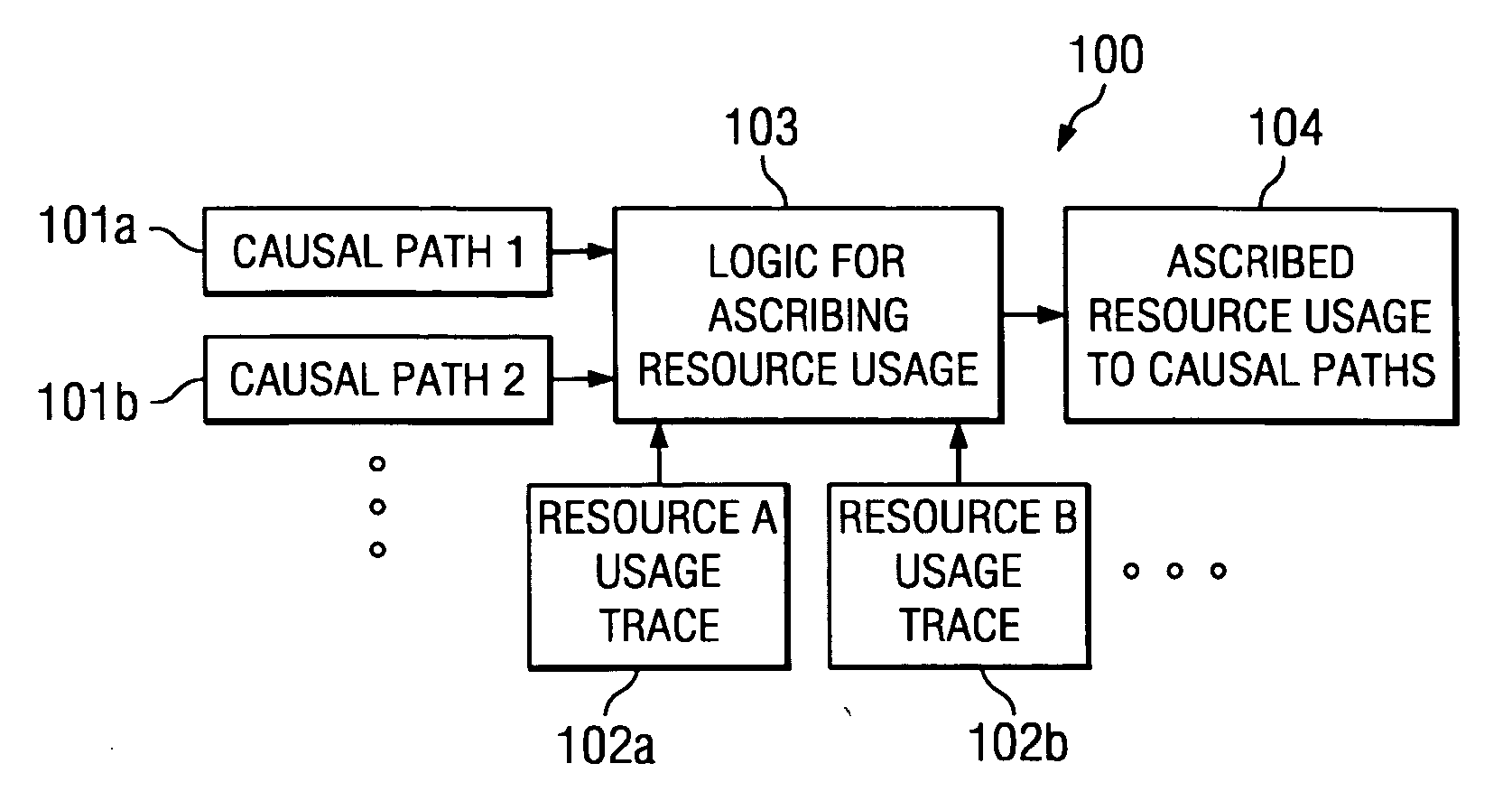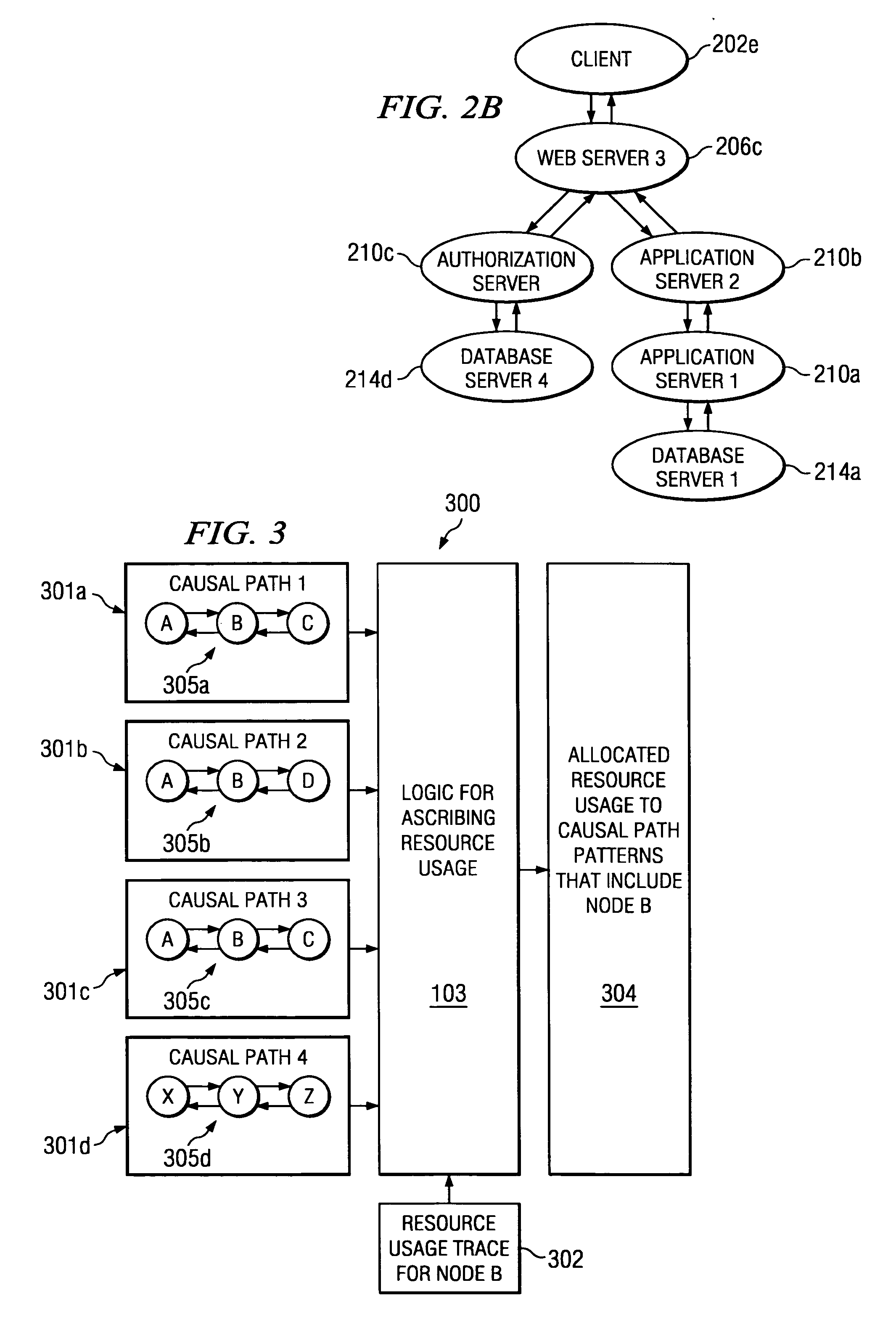System and method for ascribing resource consumption to activity in a causal path of a node of a distributed computing system
a distributed computing system and causal path technology, applied in computing, digital computers, instruments, etc., can solve the problems of resource usage, insufficient indication of where resources are being spent in this manner, complex distributed applications,
- Summary
- Abstract
- Description
- Claims
- Application Information
AI Technical Summary
Problems solved by technology
Method used
Image
Examples
Embodiment Construction
[0023] Turning to FIG. 1, an example system 100 according to one embodiment for ascribing resource usage to nodes in the causal paths of a distributed computing environment is shown. As shown, logic for ascribing resource usage 103 is implemented to receive one or more causal paths, such as causal path 1 (101a) and causal path 2 (101b) in FIG. 1. Logic 103 further receives one or more resource usage traces, such as resource A usage trace 102a and resource B usage trace 102b in FIG. 1. For instance, resource A may be energy consumed by a given node, and resource B may be CPU usage of a given node. As described further herein, various quantified resources may be measured and allocated in accordance with the embodiments provided herein. Logic 103 processes the received causal paths and resource usage traces to ascribe resource usage of a node to the causal paths 101 that include such node, thus generating output 104. As described further herein, logic 103 may be implemented as software...
PUM
 Login to View More
Login to View More Abstract
Description
Claims
Application Information
 Login to View More
Login to View More - R&D
- Intellectual Property
- Life Sciences
- Materials
- Tech Scout
- Unparalleled Data Quality
- Higher Quality Content
- 60% Fewer Hallucinations
Browse by: Latest US Patents, China's latest patents, Technical Efficacy Thesaurus, Application Domain, Technology Topic, Popular Technical Reports.
© 2025 PatSnap. All rights reserved.Legal|Privacy policy|Modern Slavery Act Transparency Statement|Sitemap|About US| Contact US: help@patsnap.com



